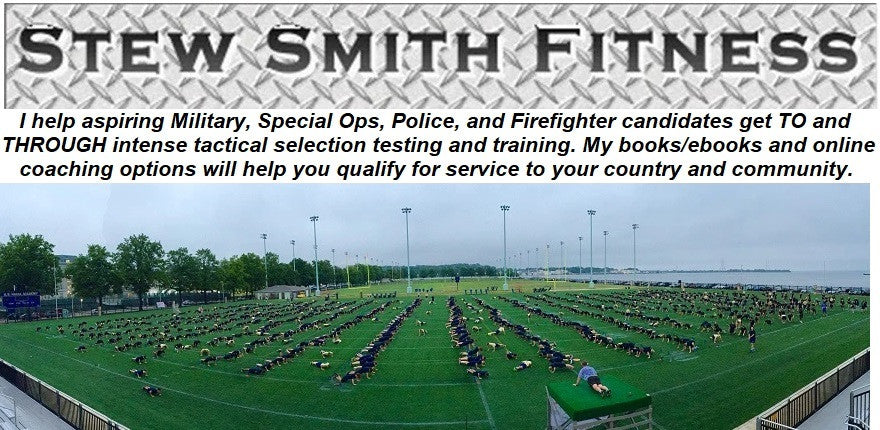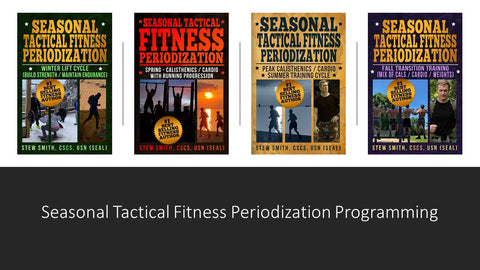What is Rucking?
Many people seeking jobs and training for challenging tactical schools (even events like Bataan or GoRuck) will realize they need to start preparing for rucking at some point.

What is a Ruck? Great Question - This article tackled some of the training / pacing strategies that you should consider as you progress into rucking. But, what is a good way to go from Couch to 5km when that 5km requires rucking? Or if you are joining the Army and know you have to run 2 miles timed and perform several miles 6-12 miles with 40-50lbs while in training – how do you progress to that level of mileage without breaking? The following list is the Rules of Rucking:
The Rules of Rucking
- You should not be rucking if you have not started walking. First, walk every day for 30 minutes. Then after a month or so, add weight or distance / speed if walking is getting easier. See beginner running program
- If you do not have a ruck, consider starting out with a weight vest, then advancing to the military issue rucking gear (if joining the military).
- No matter what your starting point, progress by adding 5-10 lbs to your ruck or weight vest every few weeks or so.
- If you are not running yet – do not ruck. You really should have a running foundation prior to rucking, especially within the military as your rucks will be long and some will be a fast shuffle pace that resembles jogging (just with shorter / higher strides per minute stride cadence)
- If you do not lift weights or skip leg days regularly - do not ruck yet. When carrying extra weight in addition to your own bodyweight, it will require your legs, hips, lower back and upper body to be strong especially when rucking 25-40% of your bodyweight. Doing exercises like dead lift, squats, front squats and lunges with barbells, dumbbells, kettlebells or sandbags will help you build the tactical strength foundation needed when progressing into rucking.
- Do not ruck daily. You can progress into running daily over time, but your rucks should be limited to two a week - MAX, similar to heavy lifting leg days. In fact, our training groups preparing for Army / USMC / Spec Ops programs will ruck on leg days each week.
- When preparing for longer rucks 12+ miles in the military or difficult events like Bataan Death March Run/ Ruck or GoRuck Heavy you should consider progressing using a similar model to half-marathon or marathon training, but replace the long run with a ruck each week.
- Foot care – If you are going to be rucking for long distances in your future, you need to toughen up the feet. Do more barefoot walking on sand, wear two pairs of socks (one normal pair cotton / wool type and one thin polyester /rayon blend against the skin), place fitted inserts into your boots / shoes, and monitor your feet when you can, especially if they get wet.
- Patience – You need time to prepare properly for rucking. Unless you have a great foundation in strength and running already, it could be a longer journey before your body can handle rucking without serious injury. Even then, you should still progress with rucking logically and not jump into a 10-mile ruck on day 1. This process for a beginner preparing for tough military selections courses that require rucking (Army Ranger, SF, Marines, RECON, etc), this could take a year or more.
- Know that Rucking Sucks! – I compare rucking to treading water. Many people can swim but treading is a challenge for many lean athletes and if you do not realize that treading is difficult, it can be a shocker to you when tasked with treading drills in Navy, Air Force, RECON type selection programs. Same for rucking. Many people know they can run, “how much harder will rucking be?” You will not know until you practice rucking (and treading) and get good at it just like any other skill in athletics. Once again, it takes time and with rucking. A regular workout can take hours or fill up an entire afternoon. Be willing to invest that kind of time into your progressions each week building up to that level of rucking skill.
Rucking and running do go hand in hand. Consider rucking a more difficult way to walk and when you need to pick up the pace, you can adjust your cadence and increase your speed that resembles running. Building up from the minimum standards of 15 minute mile pace (typical military) to competitive programs that require closer to 10 minute mile pace or faster with heavier weight and longer distances takes time as with any cardio activity. Rucking is definitely a more difficult way to run / shuffle. Be prepared for that difficulty or failure to perform and injury could prevent you from advancing in your military training programs.
The Ranger / SF Training program builds you up with calisthenics, weight training, and challenging runs and rucks in order to prepare you for 5 mile runs and 12 mile rucks, log PT, pullups, pushups, situps, and more. These workouts are good ways to build a foundation of all the elements of tactical fitness for candidate preparation you will need.
If you want help, that’s what I do…. Check out these resources that have helped spec ops candidates succeed where others have failed for the last 20+ years!
Training is What We Do:
Need Programming for Fitness Tests and Beyond? We are all about getting you TO and THROUGH your future training program. See how that works.
There is More To StewSmithFitness.com than a You May Know
(In fact, there are more than 40 books, 1000+ articles, online coaching - and more)

Who is Stew Smith CSCS? Coach, Trainer, Writer, Podcaster: I'm the former Navy SEAL that tactical candidates go to for books, ebooks and online coaching to prepare themselves to get to and through intense tactical assessment and selection programs and qualify for service in their chosen tactical profession. See More at StewSmithFitness.com
Where to Find More Information About Optimal Performance Training Programs
When you start training again, consider the seasonal tactical fitness model. I call it A WAY to train and obviously not the only way to train. But it offers the opportunity to never neglect your weaknesses, helps with flexibility and mobility, but will also put you at a level of physical abilities where you are happy with your overall ability to do just about anything. We have a system where the seasons dictate our training. When it is nicer outside, we tend to run and do more calisthenics. When it is colder and not so nice, we lift more, run less, and still maintain our outdoor activities with shorter runs and rucks. Check it out: Seasonal Tactical Fitness Periodization System.
These Seasonal Tactical Fitness BLOCK Periodization programs will walk you through 4 x 4 weeks cycles with 16 weeks of each season in two programs. (32 total weeks)

Increase Strength & Crush the PST / PAST
3 Weeks Strength - 1 Week PT / Cardio Focus
(16 weeks)
These programs will walk you through 4 cycles with 12 weeks of each season in two programs.
The Specific Military / Special Ops Physical Fitness Workouts
Navy SEAL Workout Phase 1
Navy SEAL Workout Phase 2 - 3
Navy SEAL Workout Phase 4 Grinder PT
Navy SWCC Workout
Army / Air Force Advanced Fitness / Special Ops
Army PFT Workout (Prep For Rucking, OPAT, ACFT)
Army Special Forces / Ranger Workout
Army Air Assault School Workout
Army Airborne Workout
Air Force Special Warfare IFT / OFT / Selection Prep






Advanced Running Program - Special Ops Supplement Plan
USMC RECON / MarSOC Workout
USMC OCS / TBS Workout
USMC IST and PFT
The Combat Conditioning Workout
Air Force PJ / CCT Workout Battlefield Airman Prep Course
The UBRR Upper Body Round Robin Workout / Spec Ops version
The Coast Guard Rescue Swimmer / Navy SAR Workout
The Service Academy Workout (West Point, Navy, Air Force Academy)
The Navy, Air Force, Marine Corp Boot Camp Workout
The Law Enforcement Physical Fitness Workouts
The FBI Academy Workout | FBI Workout Vol 2
The DEA Workout
The FLETC Workout - Ace the PEB
The PFT Bible: Pushups, Sit-ups, 1.5 Mile Run
The Fire Fighter Workout - Ace the CPAT
Online Coaching Options
Online PT CLUB - Weekly Workouts created personally for you.
New Member's Only Content / Services Program!
If you want access to years worth of workouts, many of the top eBOOKs, favorite workouts of the week, free fitness APP, closed Facebook Group, video / picture library of exercises, and more access to LIVE Q/A sessions check out the Stew Smith Fitness Members Section.
The dashboard below has the links to all the information, archives, videos, and links to workouts, podcasts, live Q and A lessons.
Consider this! - A Membership Program and Gain Access to Exclusive Content
(click for Fitness Club Dashboard - members only)
Questions? Just email - Stew@StewSmith.com
At StewSmith.com - List of Products and Services
- FREE Articles
- Podcasts and Swimming Videos (Youtube, TikTok, Instagram)
- eBooks
- Books and eBooks in PRINT
- Stew Smith Fitness Club membership site
- Online Coaching
Stew Smith Fitness






















